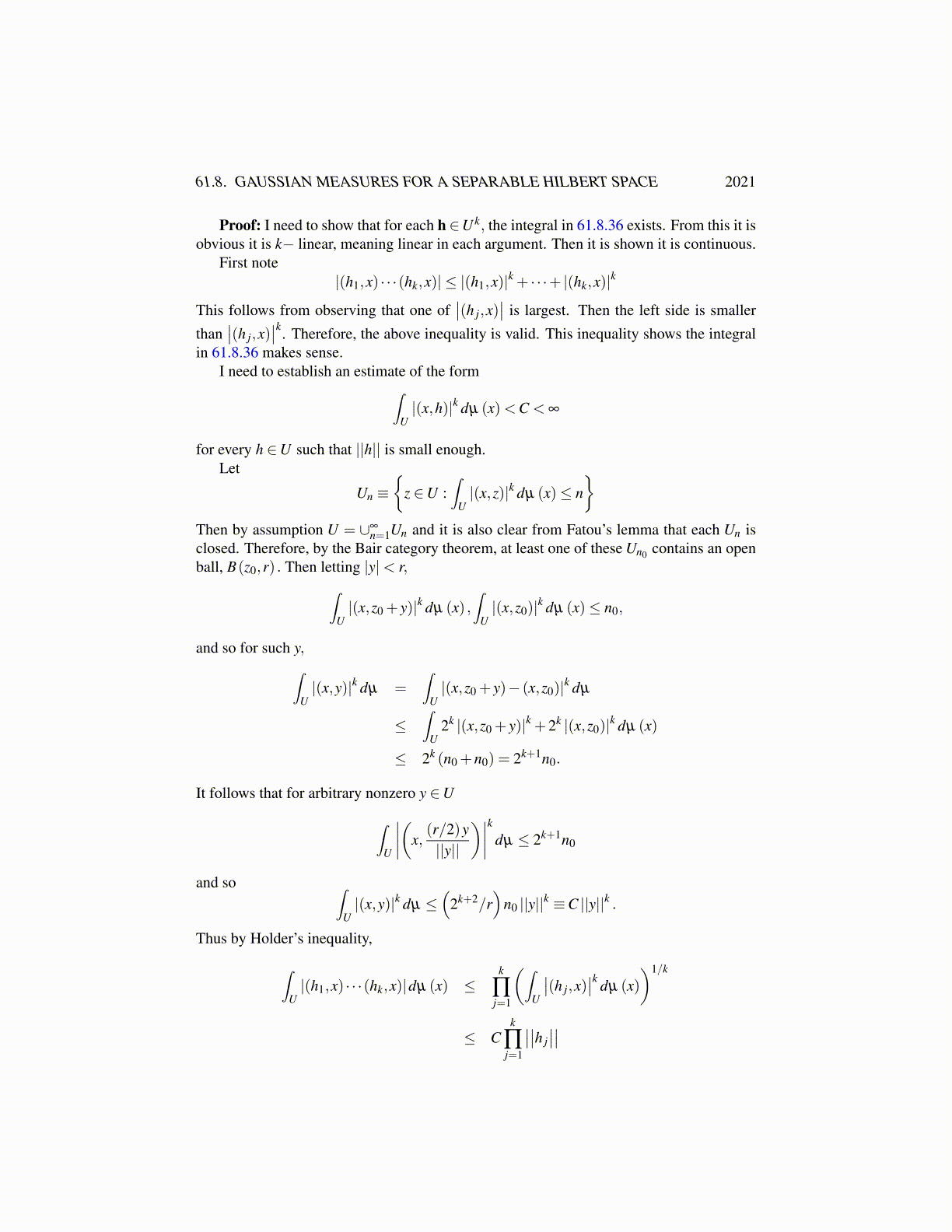
61.8. GAUSSIAN MEASURES FOR A SEPARABLE HILBERT SPACE 2021
Then for the index set equal to N the measures satisfy the necessary consistency conditionfor the Kolmogorov theorem above. Therefore, there exists a probability space, (Ω,P,F )and measurable functions, ξ k : Ω→ R such that
P([
ξ i1 ∈ Fi1
]∩[ξ i2 ∈ Fi2
]· · ·∩
[ξ in ∈ Fin
])= µ i1···in (F1×·· ·×Fn)
= P([
ξ i1 ∈ Fi1
])· · ·P
([ξ in ∈ Fin
])which shows the random variables are independent as well as normal with mean 0 andvariance 1. This proves the Lemma.
A random variable X defined on a probability space (Ω,F ,P) is called Gaussian if
P([X ∈ A]) =1√
2πσ (v)2
∫A
e− 1
2σ(v)2(x−m(v))2
dx
for all A a Borel set in R. Therefore, for the probability space (X ,B (X) ,µ) it is natural tosay µ is a Gaussian measure if every x∗ in the dual space X ′ is a Gaussian random variable.That is, normally distributed.
Definition 61.8.3 Let µ be a measure defined on B (X) , the Borel sets of X , a separableBanach space. It is called a Gaussian measure if each of the functions in the dual spaceX ′ is normally distributed. As a special case, when X =U a separable real Hilberts space,µ is called a Gaussian measure if for each v ∈ U, the function u→ (u,v)U is normallydistributed. That is, denoting this random variable as v′, it follows for A a Borel set in R
λ v′ (A)≡ µ([
u : v′ (u) ∈ A])
=1√
2πσ (v)2
∫A
e− 1
2σ(v)2(x−m(v))2
dx
in case σ (v)> 0. In case σ (v) = 0
λ v′ ≡ δ m(v)
In other words, the random variables v′ for v ∈ U are all normally distributed on theprobability space (U,B (U) ,µ) .
Also recall the definition of the characteristic function of a measure.
Definition 61.8.4 The Borel sets in a topological space X will be denoted by B (X) . For aBorel probability measure µ defined on B (U) for U a real separable Hilbert space, defineits characteristic function as follows.
φ µ (u)≡ µ̂ (u)≡∫
Uei(u,v)dµ (v) (61.8.31)
More generally, if µ is a probability measure defined on B (X) where X is a separableBanach space, then the characteristic function is defined as
φ µ (x∗) = µ̂ (x∗)≡
∫U
eix∗(x)dµ (x)